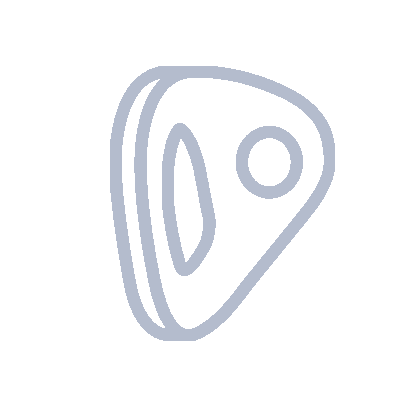

Start from the next recess left of the slab at the beginning of Atlantic Wall (or the start of the B-Route to the ledge above). This is immediately right of the projecting, undercut nose/face capped high up by an overhang.
P1 - 25m, 6a: Start up the block stack immediately right of the undercut, projecting face. After 3m, move left, around the corner and onto the slabby face. Climb up to the roof and pull through it using a vertical crack and a bucket hold above the lip. Continue to the vegetated band above. Scramble up and slightly right to an orange recess/cave in crumbly rock, directly below a crack running up the front of a pointed prow.
P2 - 12m, 5b: Climb through the cave/recess until able to continue up the crack to a ledge. The stance is on the right on a corner beneath an overhang and is shared with Atlantic Wall.
P3 - 35m, 6c: Climb the flaky corner above the stance to a triangular, white roof. The crack continues through the roof and up the prow above. Jam stenuously through the roof crack until able to use a small lay-away hold deep in the crack to establish oneself on the face above. Continue up to a small cubby-hole stance. Pull through the overhang above and continue up to a stance near a cairn.
P4 - 25m, 4b: Climb the bulging under-cut rib above the stance and right of Atlantic Wall's final easy recess. Scrambling leads to the top.
A variation that keeps the grade down the 6a is to use the third pitch of Atlantic Wall.




















































A variation that keeps the grade down the 6a is to use the third pitch of Atlantic Wall.

























While it is true that less information may make your adventure more, adventurous, the right information will help you grow your experience-jar to the point that you can confidently choose not to seek the info.
User feedback and community contributions are the fastest way to increase our database, so, if you have the time, inclination and resources to contribute, please hit us up!
Lorem ipsum dolor sit amet, consectetur adipiscing elit. Suspendisse varius enim in eros elementum tristique. Duis cursus, mi quis viverra ornare, eros dolor interdum nulla, ut commodo diam libero vitae erat. Aenean faucibus nibh et justo cursus id rutrum lorem imperdiet. Nunc ut sem vitae risus tristique posuere.
Lorem ipsum dolor sit amet, consectetur adipiscing elit. Suspendisse varius enim in eros elementum tristique. Duis cursus, mi quis viverra ornare, eros dolor interdum nulla, ut commodo diam libero vitae erat. Aenean faucibus nibh et justo cursus id rutrum lorem imperdiet. Nunc ut sem vitae risus tristique posuere.
Do you have beta or other content to share with us to improve this route info?
We'd really appreciate your input!